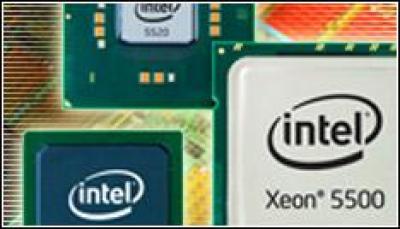Moore’s Law May Fade Away In Five Years

Research company iSuppli says the cost of making increasingly smaller chips will get to the point that by 2014, the equipment needed to make 18-nm processors will be too expensive for the chips to be used in volume systems
Moore’s Law, which has driven the microprocessor industry for the past 40 years, has about five more years of relevancy before the cost of manufacturing smaller and smaller chips becomes too great, according to research company iSuppli.
As chip makers continue their push to design smaller processors, the cost of the equipment needed to make them is growing to the point where the new chips will be too expensive to be used in volume systems, iSuppli analyst Len Jelinek said in a report.
“The usable limit for semiconductor process technology will be reached when chip process geometries shrink to be smaller than 20 nanometers, to 18-nm nodes,” Jelinek said in his report, issued on 16 June. “At those nodes, the industry will start getting to the point where semiconductor manufacturing tools are too expensive to depreciate with volume production, i.e., their costs will be so high that the value of their lifetime productivity can never justify it.”
The microprocessor industry should get to that point by 2014, resulting in Moore’s Law being relegated “to the laboratory and altering the fundamental economics of the industry.”
Moore’s Law came about after Intel co-founder Gordon Moore predicted that the number of transistors on a processor will double about every two years, a path the chip-making industry has followed for about four decades.
The growing number of transistors on chips that were increasingly smaller has helped drive down the cost of technology and made way for everything from inexpensive PCs to game consoles to smartphones, and chip makers have found ways to continue to shrink the silicon.
However, that needs to change, according to Jelinek. Chip makers will need to find other ways to make money, including extending the revenue-generating life of the processors they do make. Intel and rival Advanced Micro Devices already offer chips built on a 45-nm manufacturing process, and are readying 32-nm processors, with the goal of shrinking chips further. Officials with both companies have said Moore’s Law will continue being a driver in the industry.
Officials with Toshiba, in an effort to compete with the likes of Intel and Texas Instruments in the area of NAND memory chips, said 17 June that Toshiba plans to speed up the shrinking of its chips, including rolling out 28-nm processors in 2010 and skipping the 32-nm size altogether.
In addition, officials with Toshiba and NEC Electronics said June 18 that they are extending their work with a group of companies led by IBM to jointly develop 28-nm chips.
While all chip makers have said they will continue shrinking the silicon, they also are finding other ways to add value to their products and diversify their portfolios.
Both Intel and AMD are bringing other capabilities to their processors, from energy-efficient features to on-chip virtualisation capabilities. In addition, they also are looking to extend their software capabilities. For example, Intel is buying software maker Wind River for $884 million (£540m).
iSuppli’s Jelinek said chip makers will also reap revenues from processors for a longer period of time. For example, the vendors are continuing to gain revenues from their 65-nm processors longer than they did from their 90-nm chips.
“The semiconductor industry will be living with historical generations of technology longer than it did before,” he said. “You are not seeing these geometries rise and fall off the way they did before. Rather, they are living on.
“Historically, the focus in the semiconductor industry was always how quickly you could move to the next geometry node. Now the question is how to make money by sustaining a specific node.”